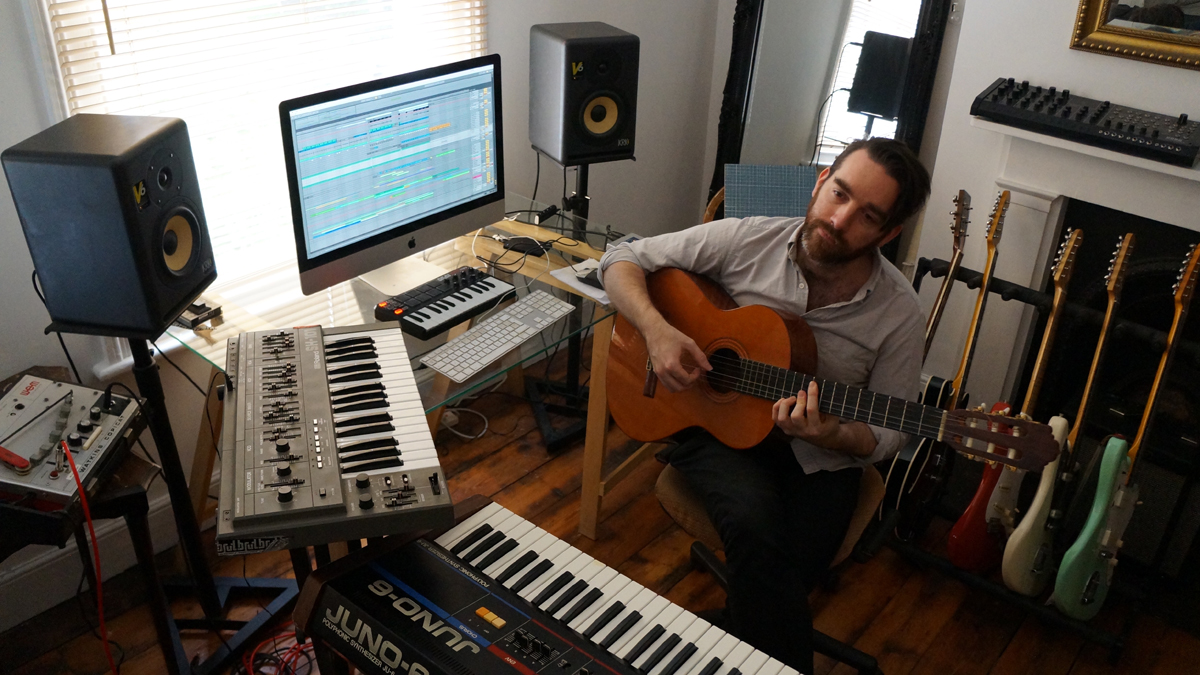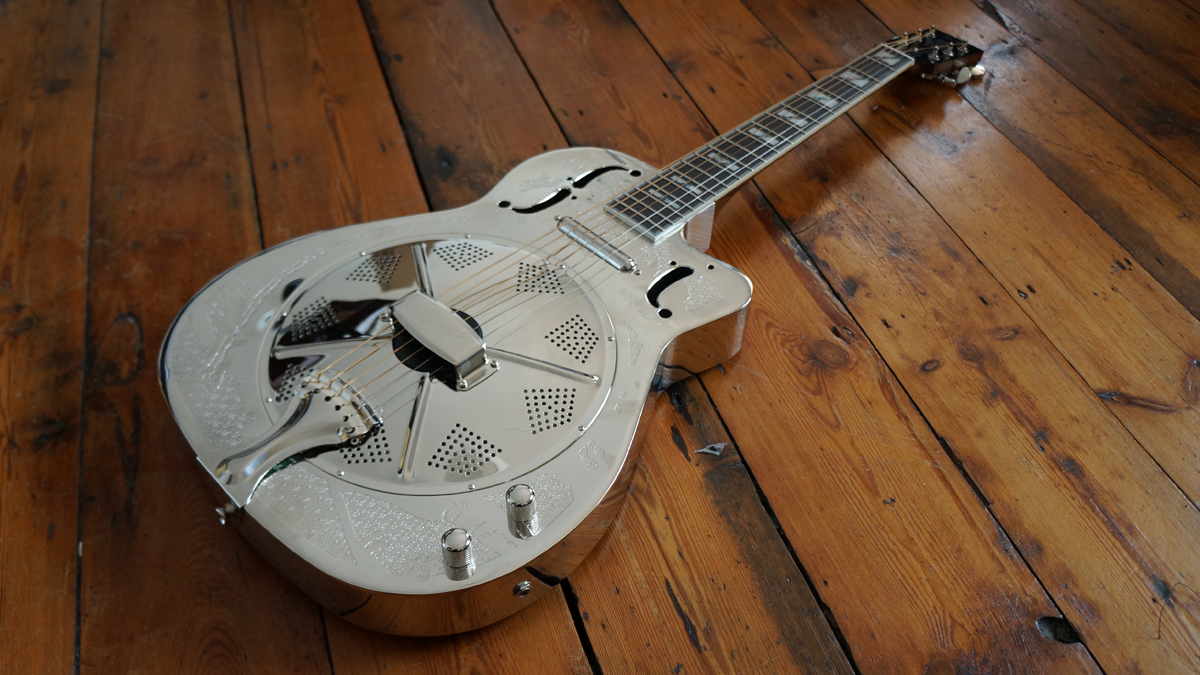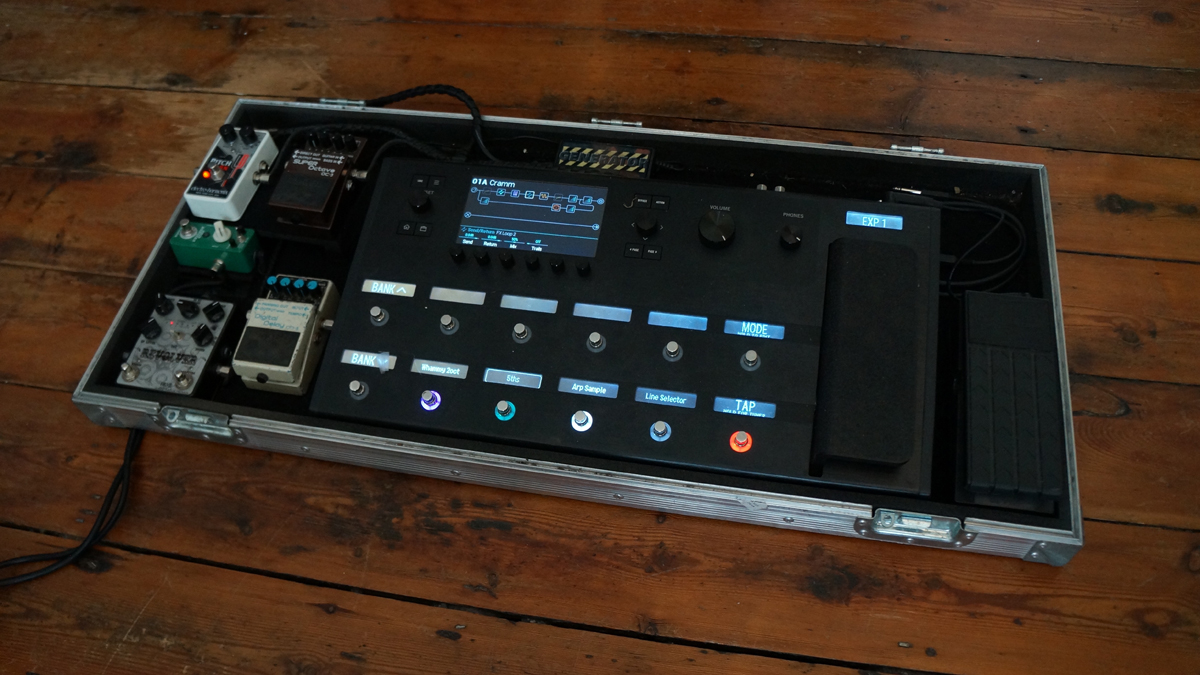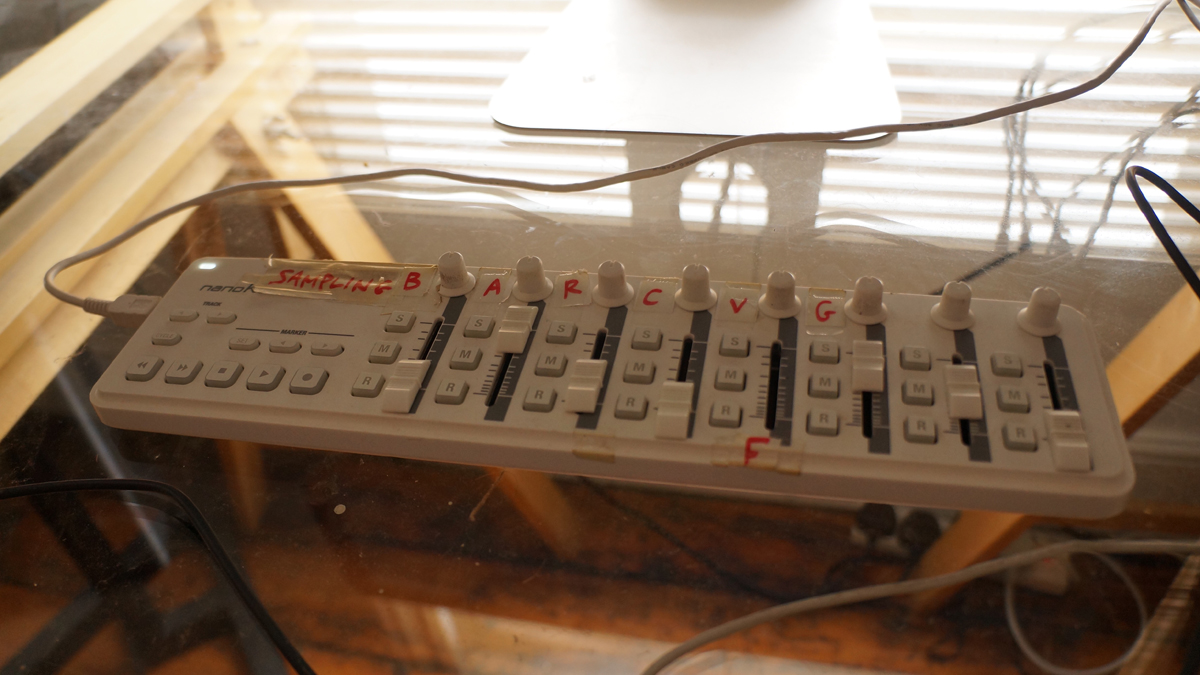Me in my Studio: Matt Calvert
Goldie’s musical director shows you his temporary facility

Welcome
Best known for forging electronic sounds with live instruments in Three Trapped Tigers, Strobes, Heritage Orchestra and as MD for Goldie's live band, multi-instrumentalist/composer Matt Calvert is now gearing up to release Typewritten, his entirely acoustic yet electronically-influenced solo debut on Truant Recordings.
Currently between studios having moved back to London after a few years in Berlin, we asked Matt to show us a few key parts of his sound in his temporary setup.
"Having a permanent setup is great, but it is possible to make amazing music anywhere with a laptop, Ableton Live, some cheap plugins and any mic. I recorded a lot of my album outside of proper studios."

Ozark Resonator guitar
“When recording my album Typewritten (which has only acoustic instruments) I borrowed a cheap Ozark Resonator which had tons of buzzy, rattly character, sounding like a big banjo. It really helped give a different angle to the guitar element that blended really well with the sound world - lots of percussion, vibraphone, marimba, strings and acoustic keyboards. I’ve since bought this electro-acoustic Ozark for gigging the album’s material.”

Nylon string guitar
“I brought this out of retirement for my album. Currently, the strings on it are 15 years old (going a bit green in places) - before the recording it was last used on my second year classical guitar recital at Guildhall. I like that knackered sound, though, a bit like on Portishead’s track The Rip. Like the resonator it also brought a character that a normal steel string can’t.”

Spectrasonics Keyscape
“This immaculately-sampled keyboard collection became a huge part of my album - the upright pianos added a vividness (complete with pedal noises) to my demos that helped steer the sound. Even though I replaced most of it with a real upright piano for the final arrangements (there are some things you can’t get from anything other than a physical acoustic instrument, like being able to reach inside a piano), I left it on a few tracks or used a mixture within certain pieces - I’m not sure people could necessarily tell them apart. The dulcitone has also become a huge part of my sound.”

Roland SH-101
“Apart from my acoustic record, there’s hardly a production or project that I haven’t used this for. I was lucky to get this in 2007 for £270 (less than the recent Roland Boutique SH-01A reissue).
“I’m not a hardware or analogue snob - some of my favourite music is all made from soft synths, and I use the TAL Bassline-101 plugin a lot, too. I’m more interested in whatever is inspiring to use, and have always advocated for good musical ideas outweighing gear collections - although, as much as I subscribe to that ideology, my financial situation has enforced it!”

Roland Juno-6
“Admittedly, this isn’t mine (it belongs to my TTT bandmate Tom Rogerson) but it’s too significant to exclude! It changed our sound immediately and is all over all our records from the second EP onwards. Once you add delay, reverb, distortion and other FX (the MURF Moogerfooger suits it well), it’s incredibly versatile. And that chorus…
“I bought my own Juno-60 but stupidly sold it to downsize when I moved to Berlin. Luckily, the TAL-U-NO-LX V2 plugin is incredibly faithful, but again, you can’t beat the real thing for getting inspired.”

Roland Space Echo
“This has also featured on most productions - it just adds vibe and inspiration straight away, whether using the echo, spring, or just distorting things. UAD makes a very impressive plugin emulation but I consider the hardware piece to be almost like an instrument that you can play with.
“I also have a modded WEM Copicat and my Electro-Harmonix Memory Man gets a lot of action, too. I’m looking forward to doing some non-exclusively-acoustic music to get into these things again!”

Fender guitars
“Something about Fenders are just expressive for how I play, and have a character that comes through even when the effects are piled on. None of these guitars are vintage - I’m not massively precious about electric guitars, to be honest.
“Missing in action here is a USA Telecaster from 2007 that has actually seen the most use, but I love the vibe of offset Fenders (the Jazzmaster and Jaguar), and have been getting into the Strat recently, especially the ‘80s-sounding ‘out of phase’ pickup settings. The Coronado is a bit of an outlier for Fender.”

Pedalboard
“This monster was curated to be a live solution for Tigers, once I realised that I needed two of everything to pull off the arrangements from our second album.
“The Line 6 Helix is amazing - super flexible in terms of routing (compared to a normal pedal setup) and programming. It can integrate with other stompboxes easily, and can send MIDI to control Ableton Live. I also use Line 6’s M9 a lot for gigs and all sorts - it’s brilliant.
“If I had to pick a few pedals, though, it’d be the Digitech Whammy, EHX Memory Man and EHX Frequency Analyzer.”

Ableton Live with Korg nanoKontrol
“An obvious choice, but Ableton Live has become indispensable. Everything about Live is geared towards creativity, especially how you can use samples, plus the FX and MIDI mapping capability. It’s an amazing tool for writing and generating ideas, and I use it for all of my studio-based work and various live performances - either building custom synth/sample rigs for Goldie’s live band or numerous Heritage Orchestra projects, or doing more experimental live sampling/processing with Strobes using this controller.”

I’m the Deputy Editor of MusicRadar, having worked on the site since its launch in 2007. I previously spent eight years working on our sister magazine, Computer Music. I’ve been playing the piano, gigging in bands and failing to finish tracks at home for more than 30 years, 24 of which I’ve also spent writing about music and the ever-changing technology used to make it.